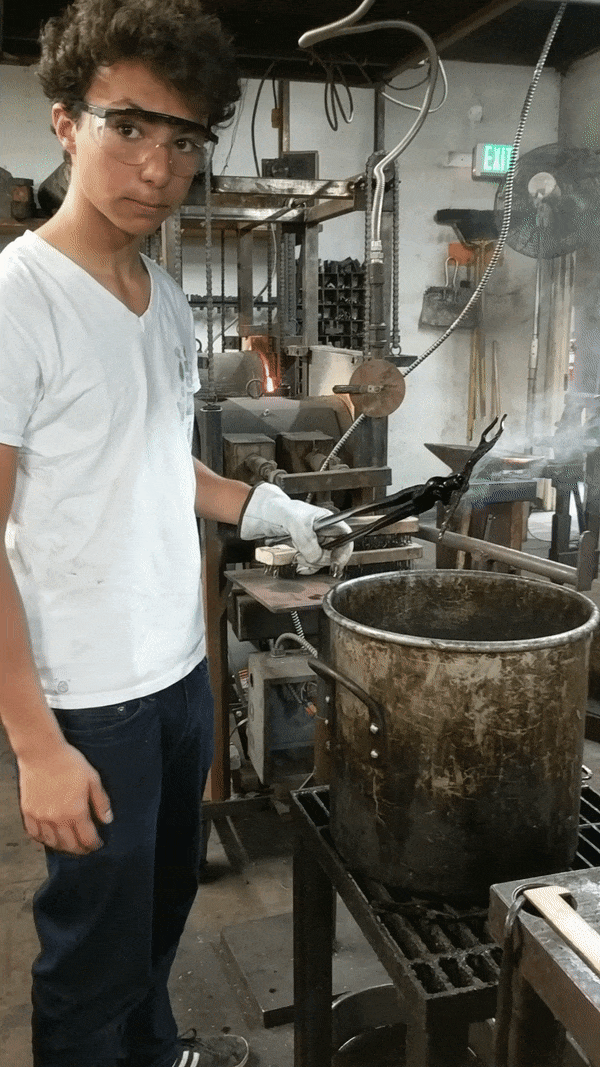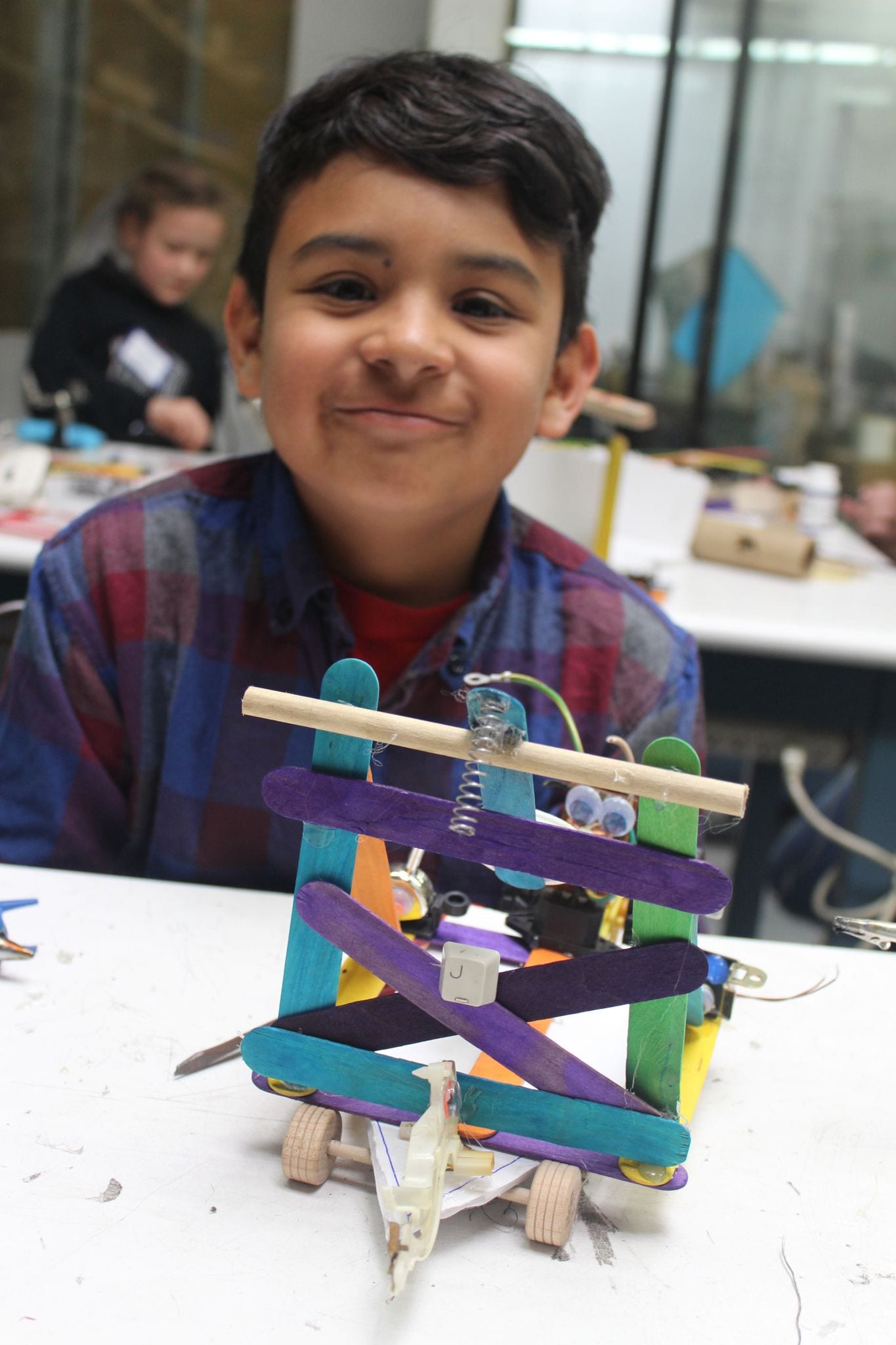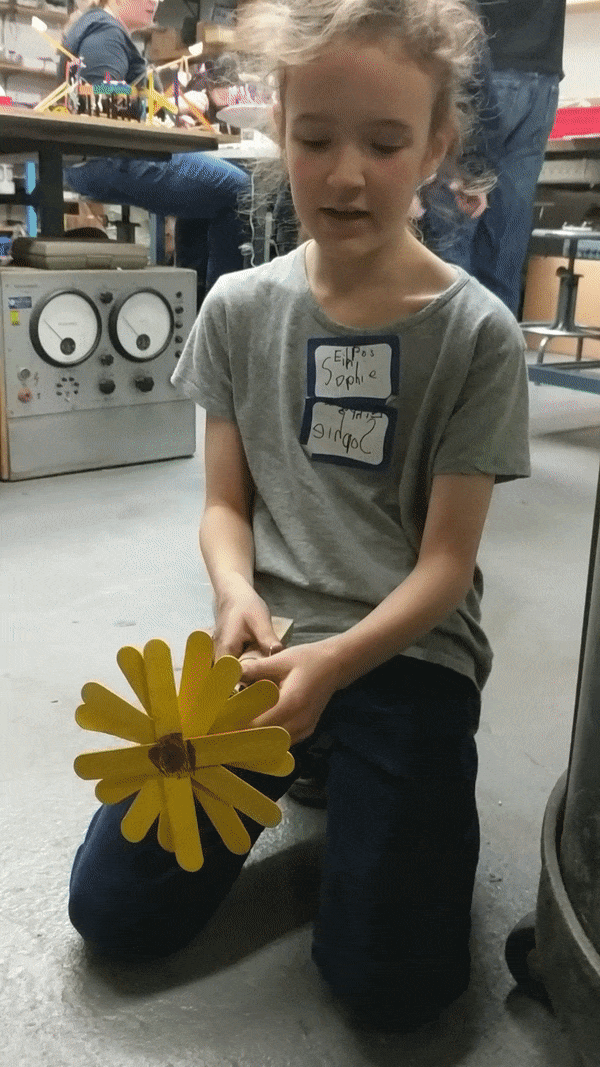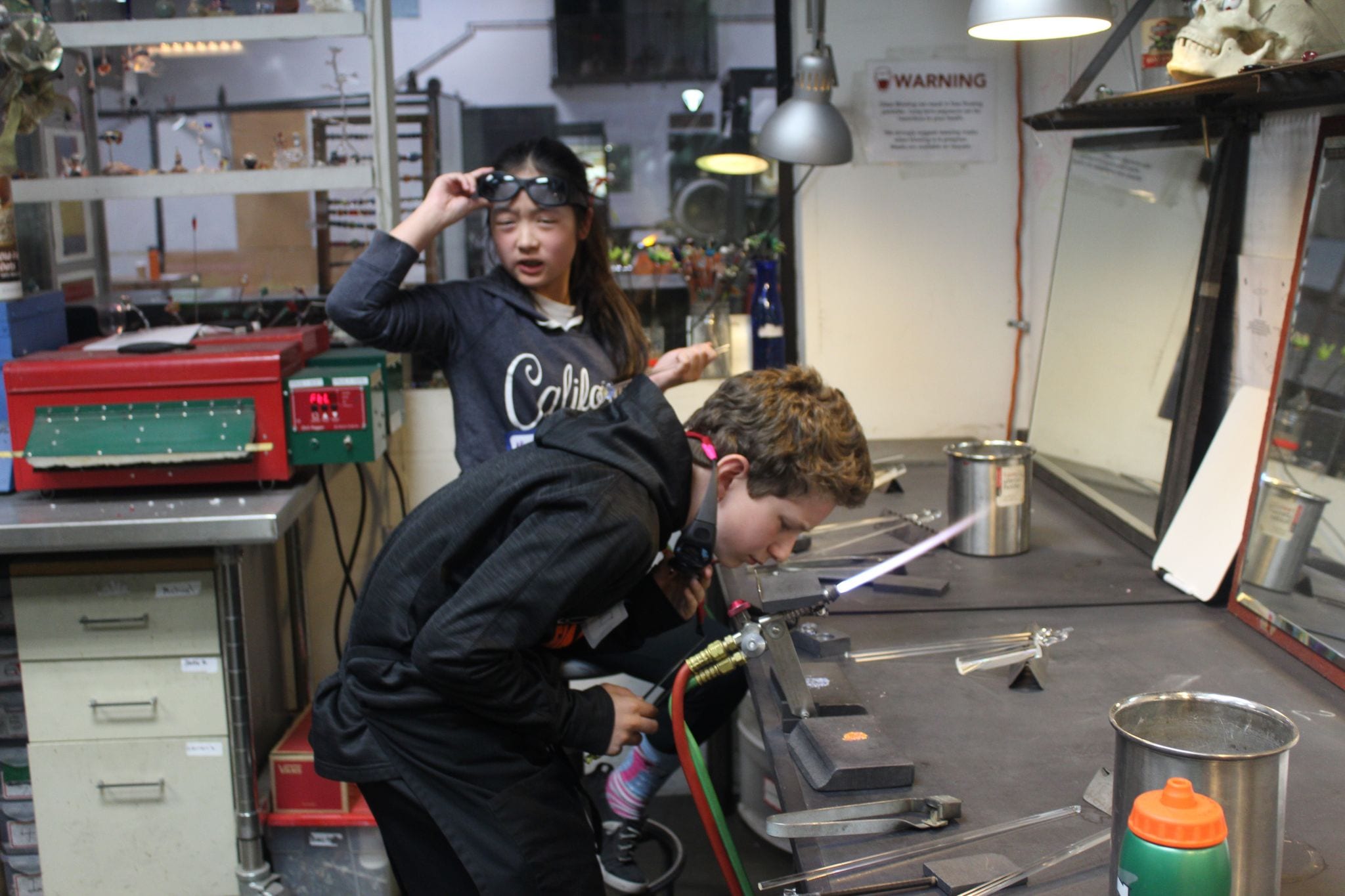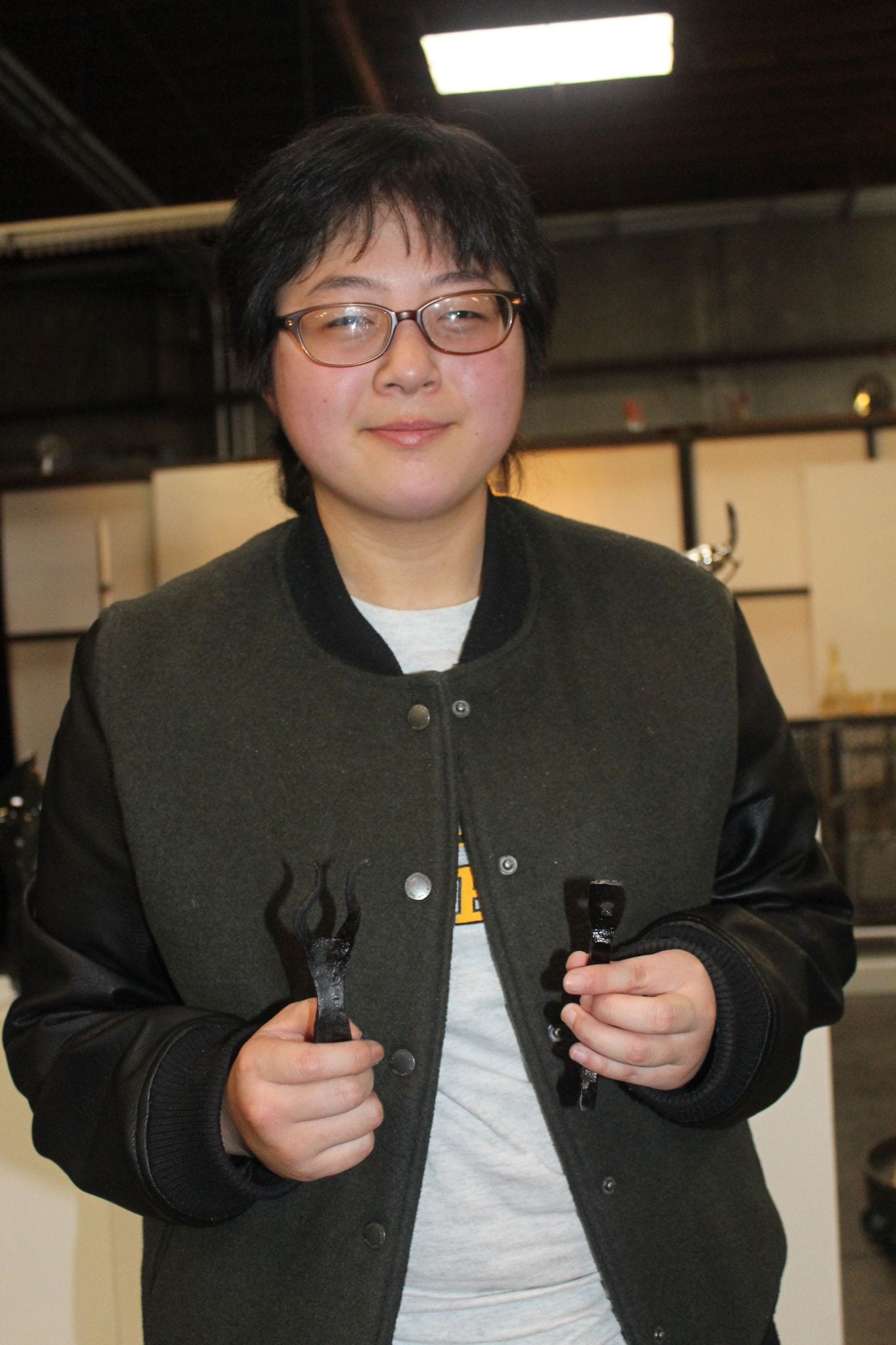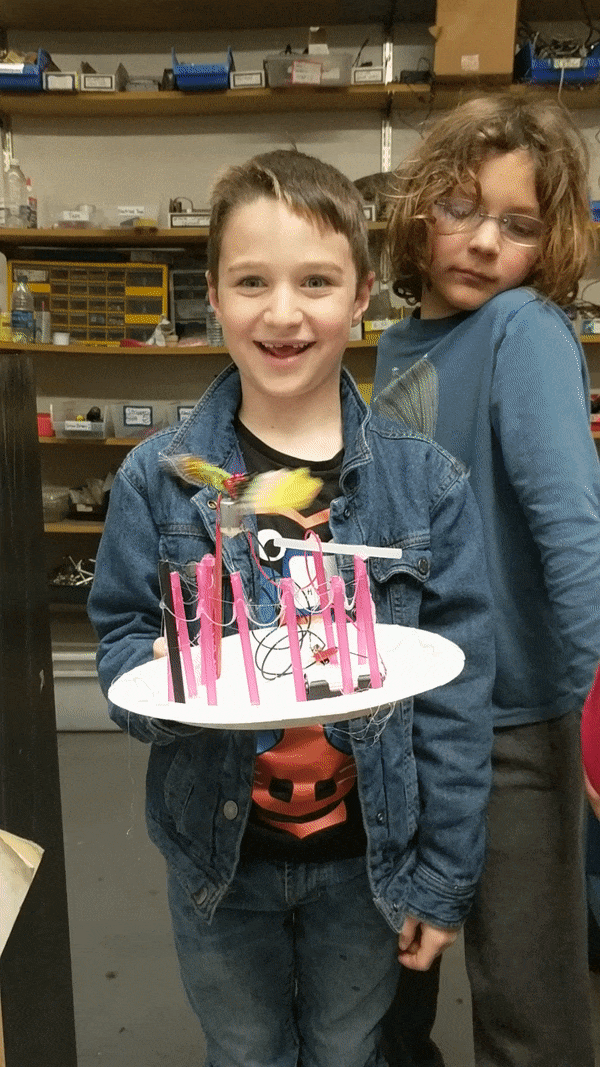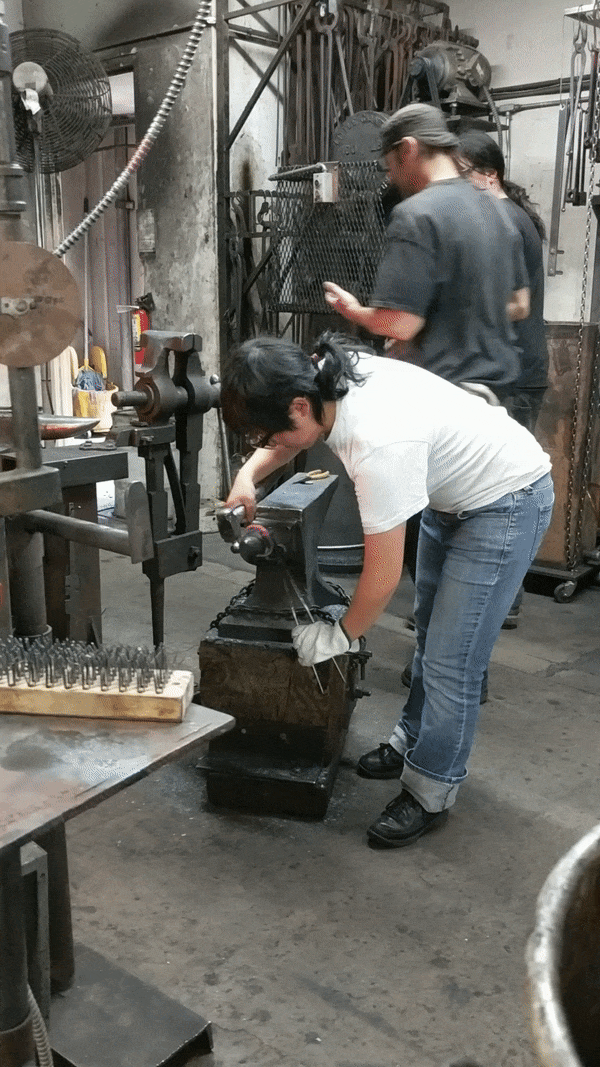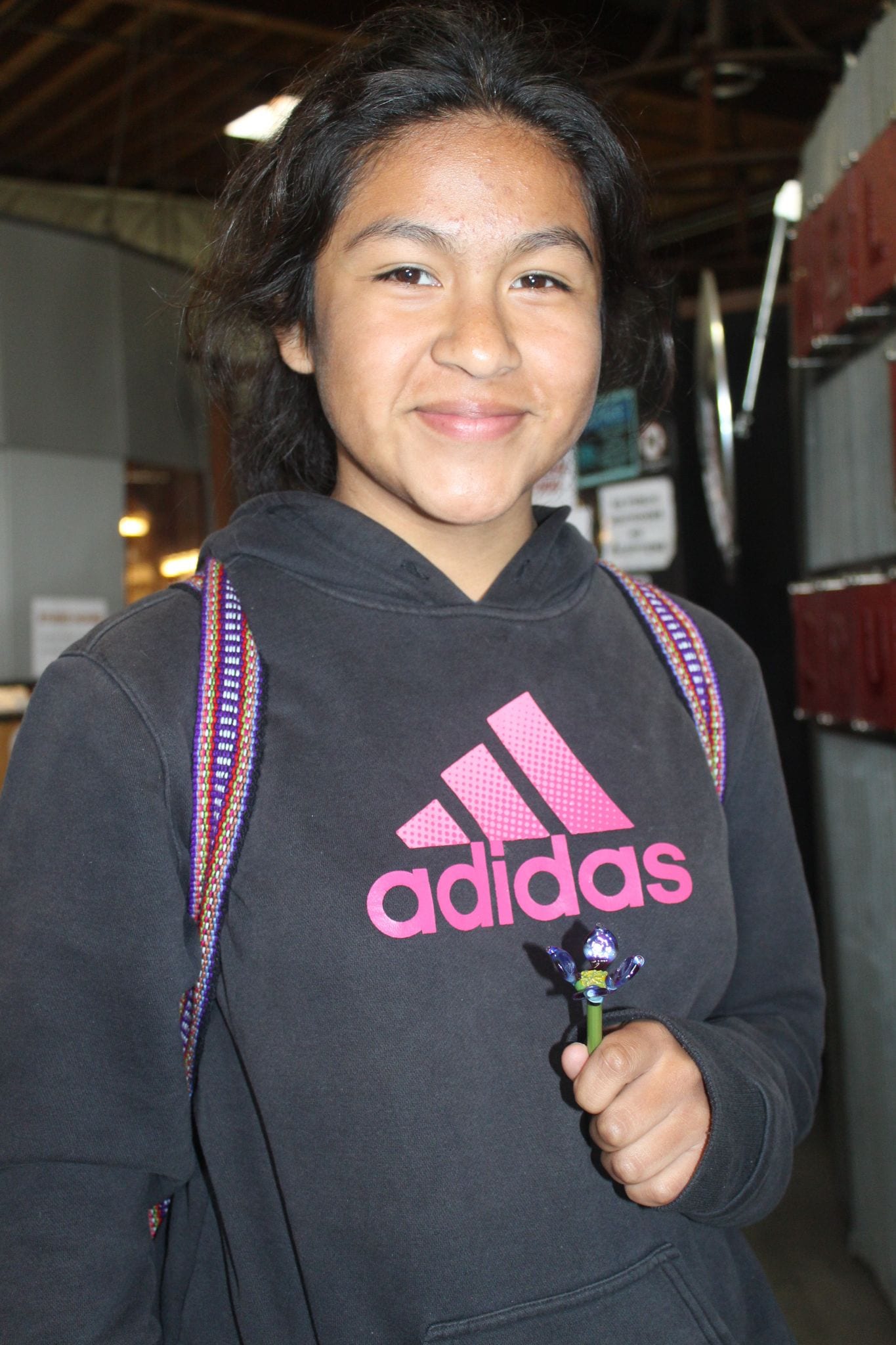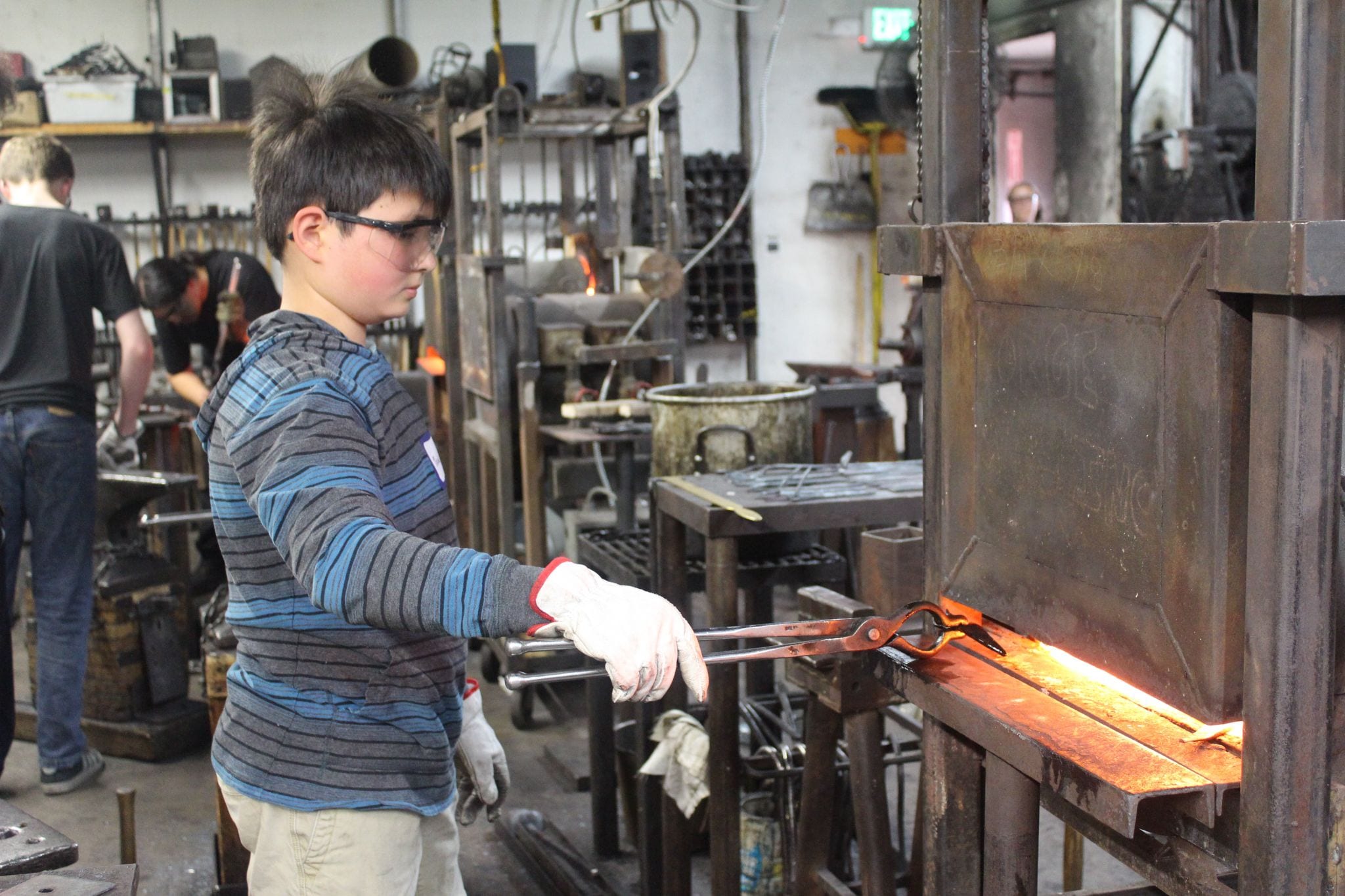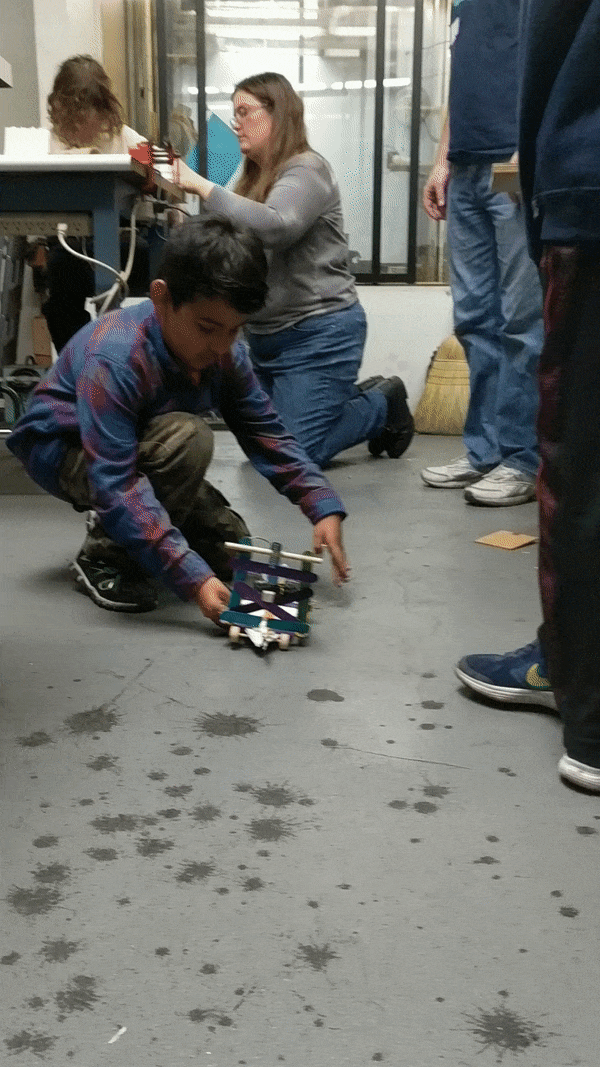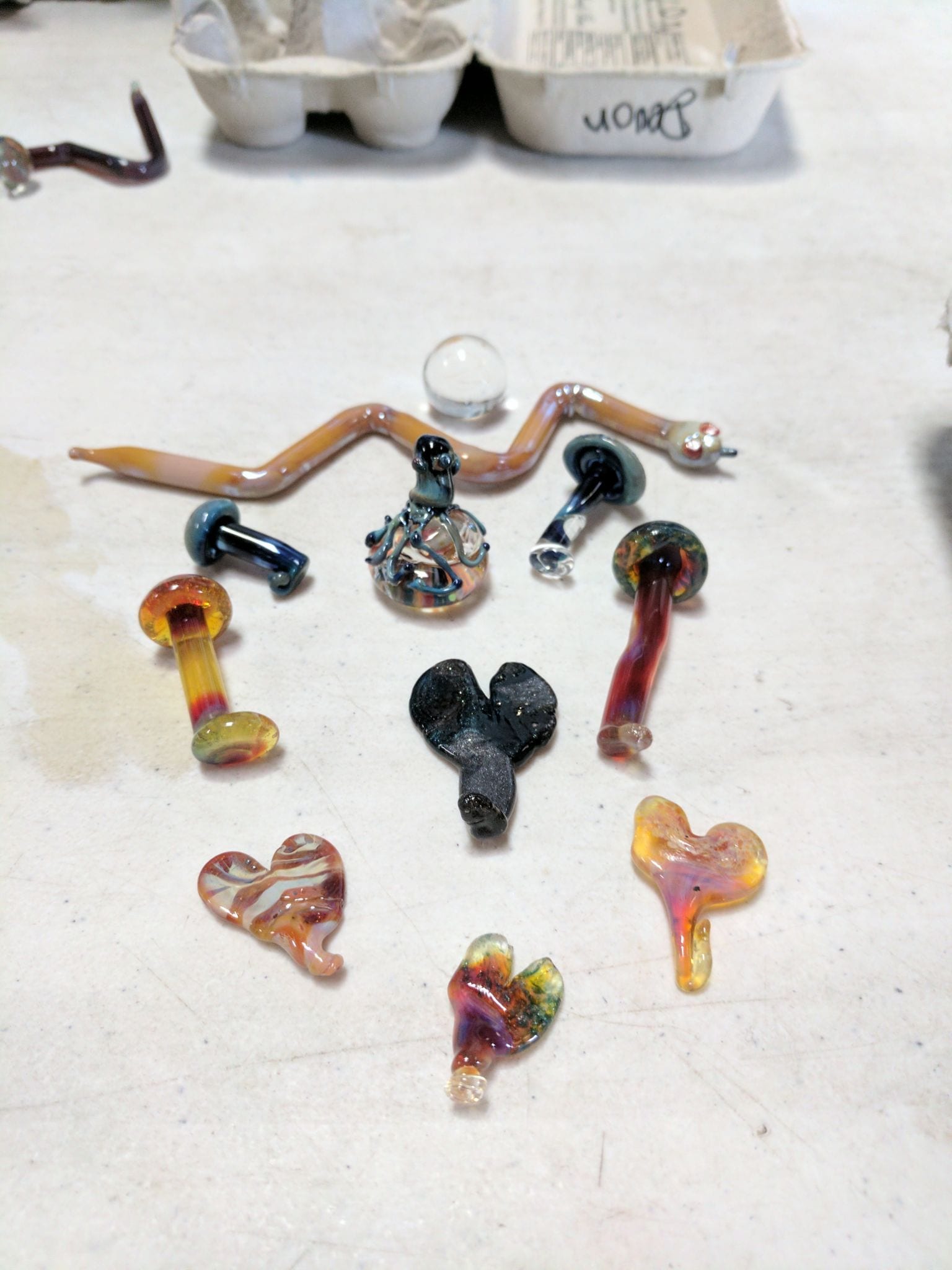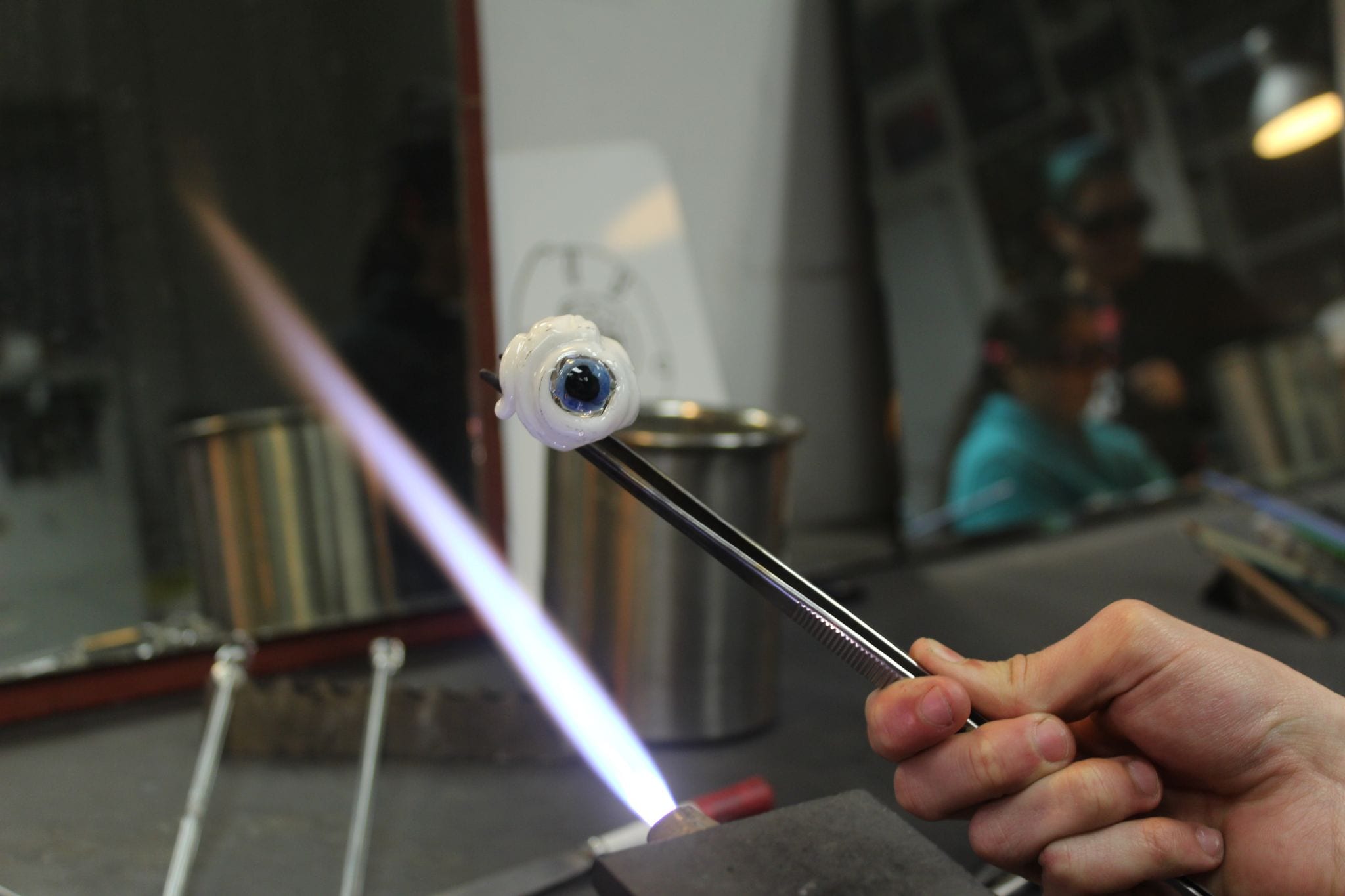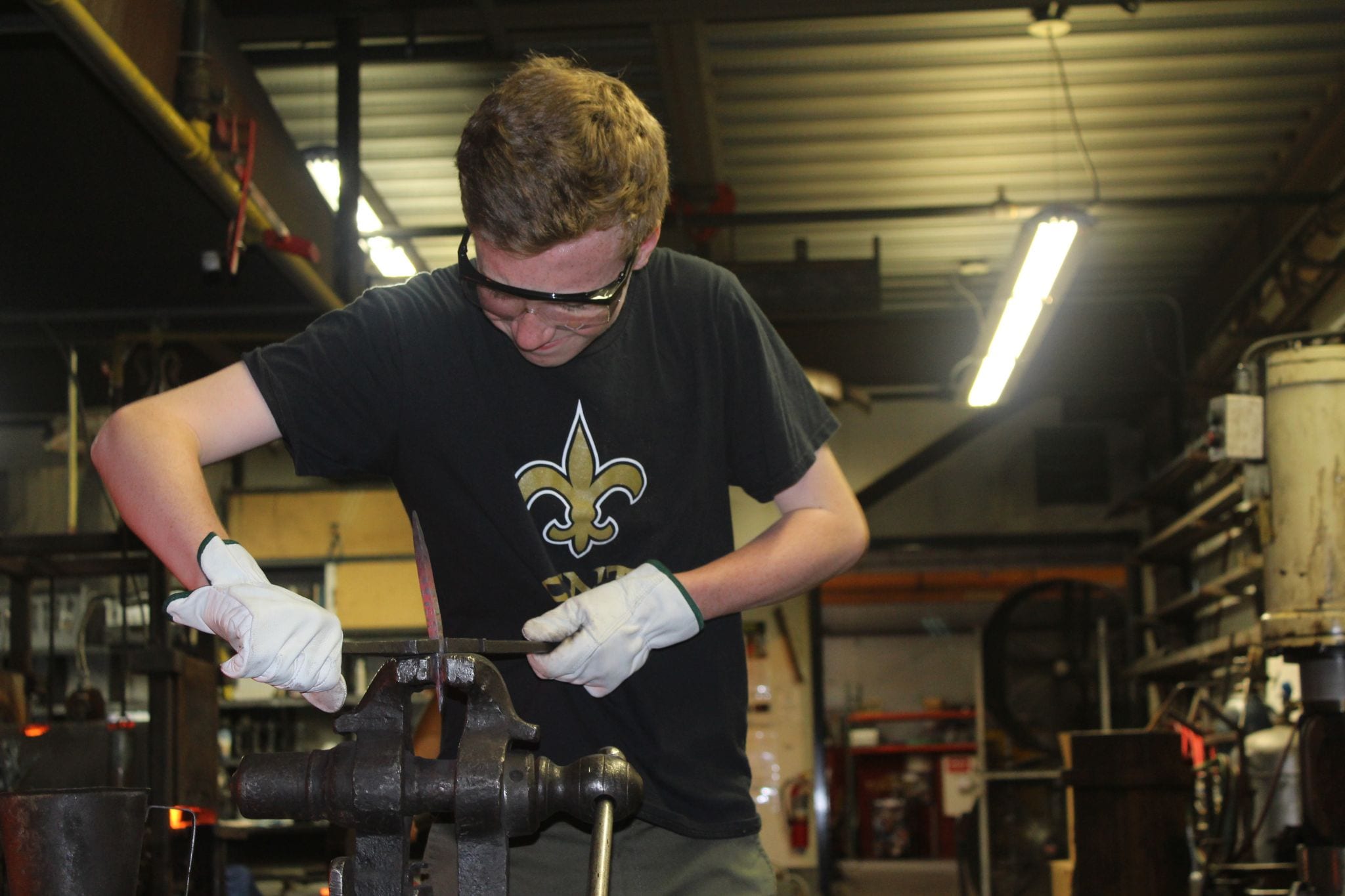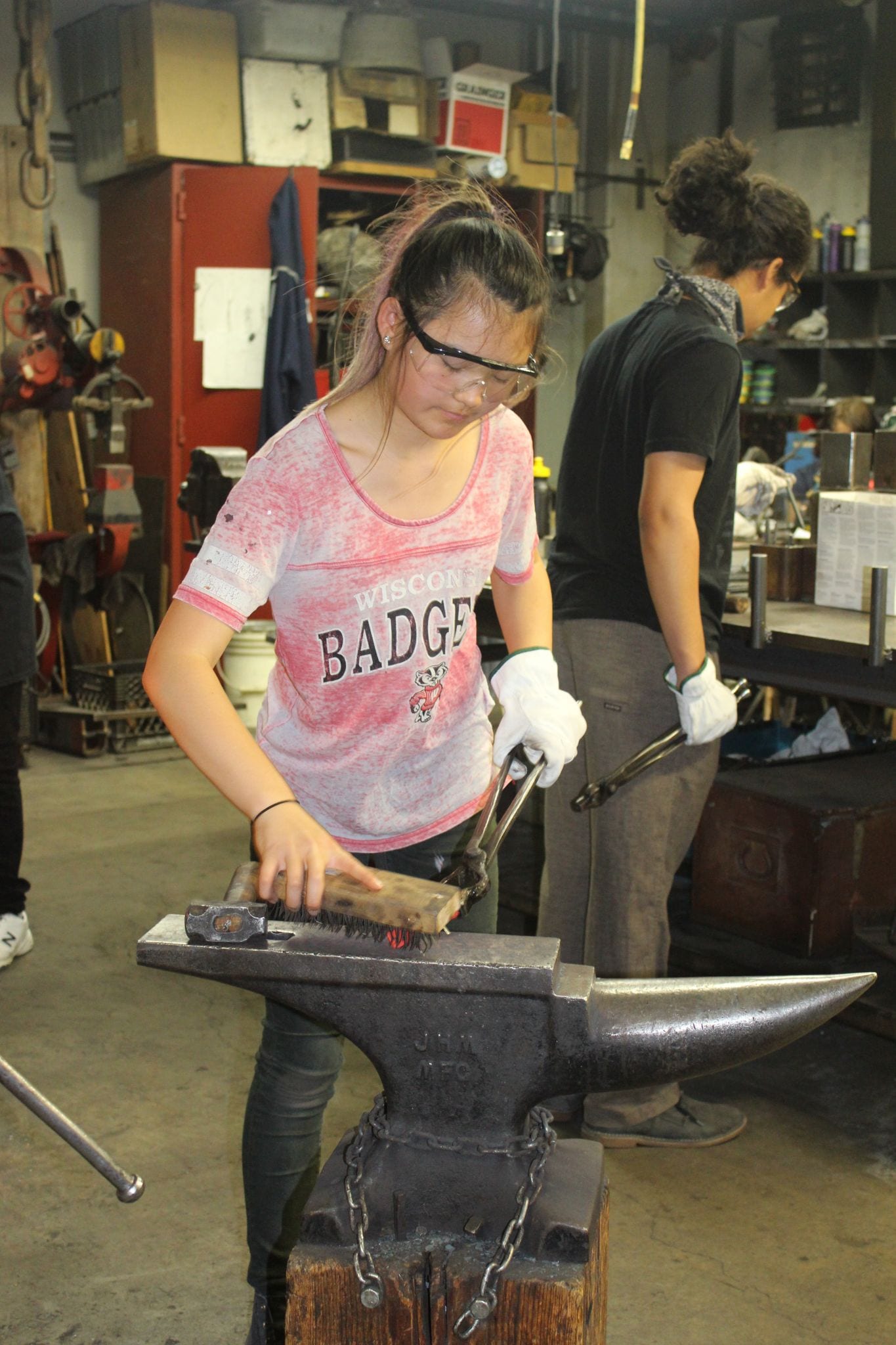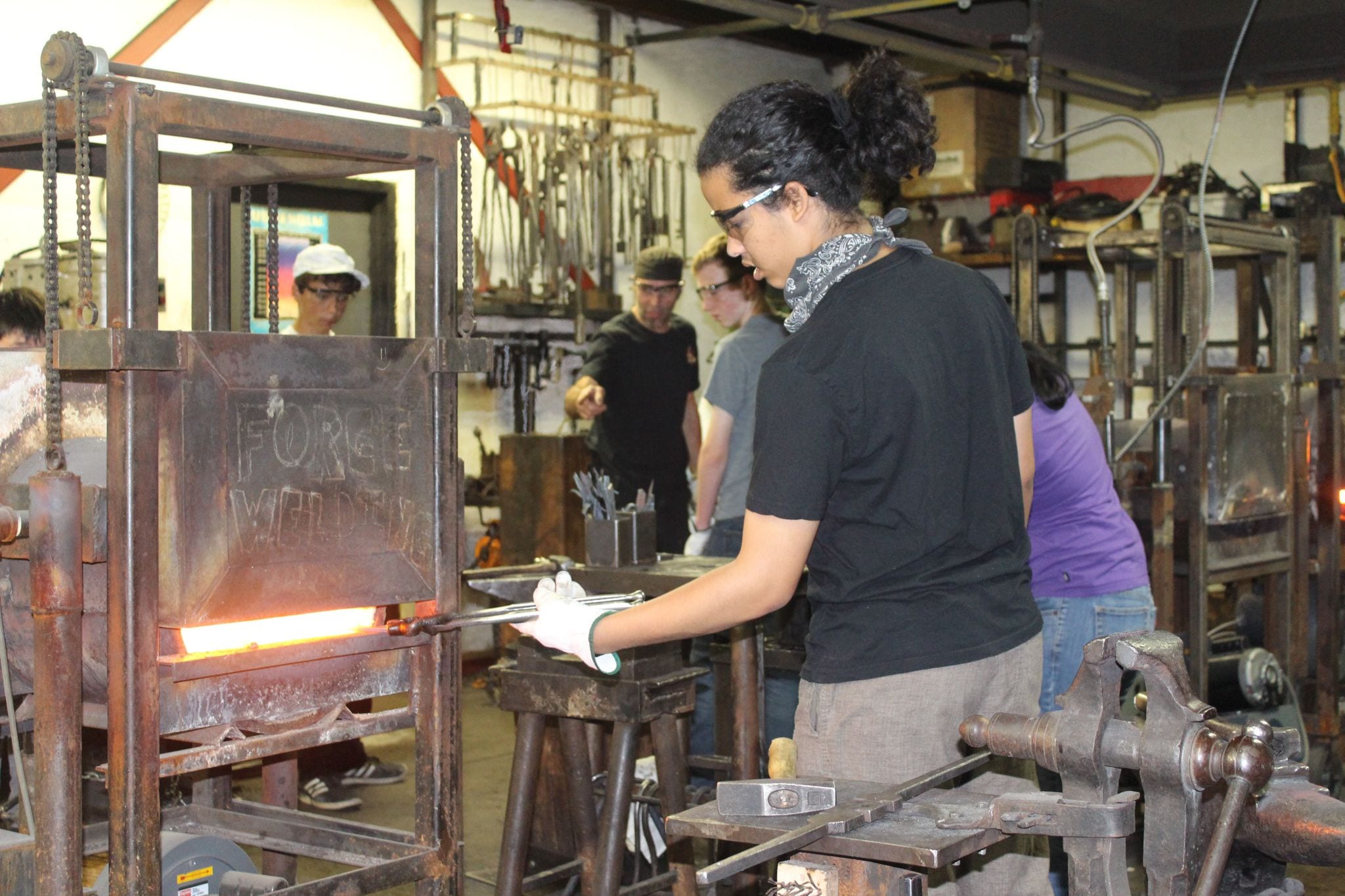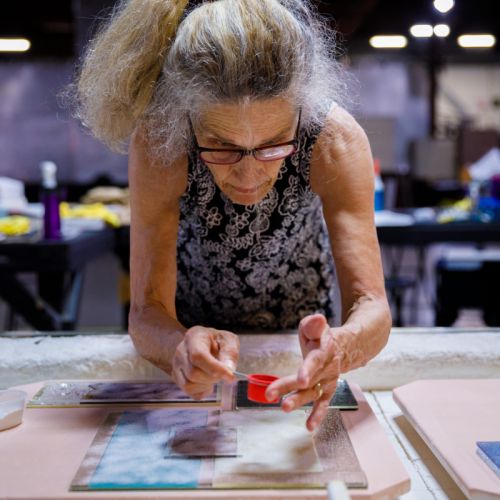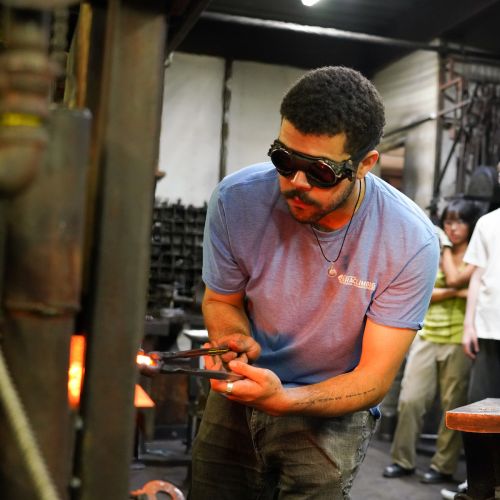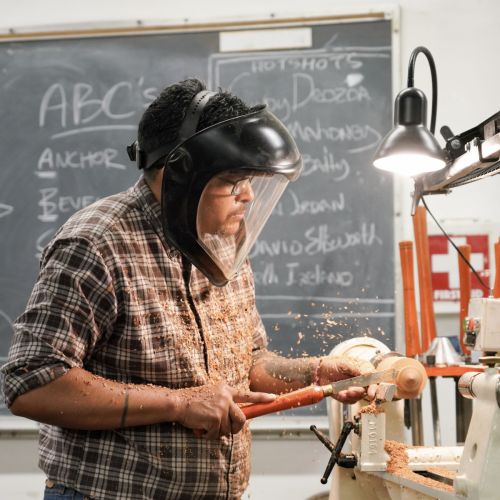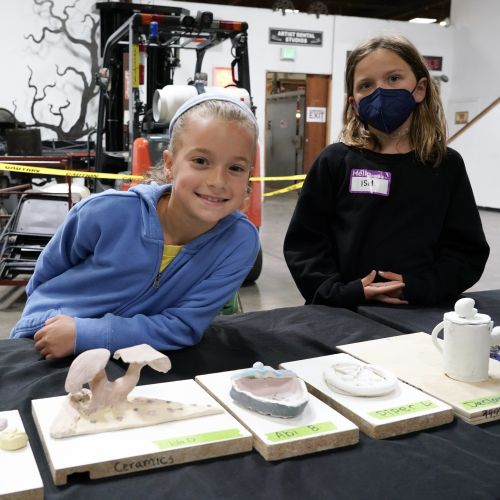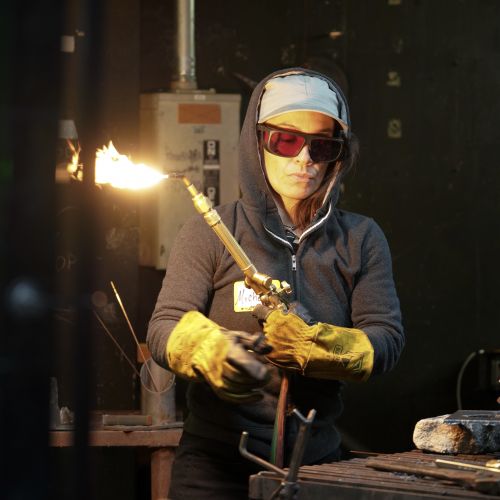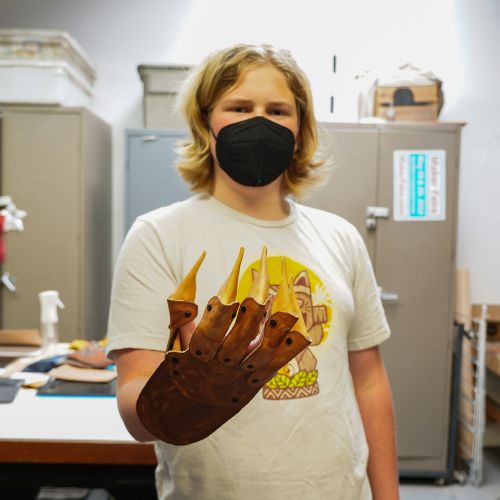by: Natasha von Kaenel
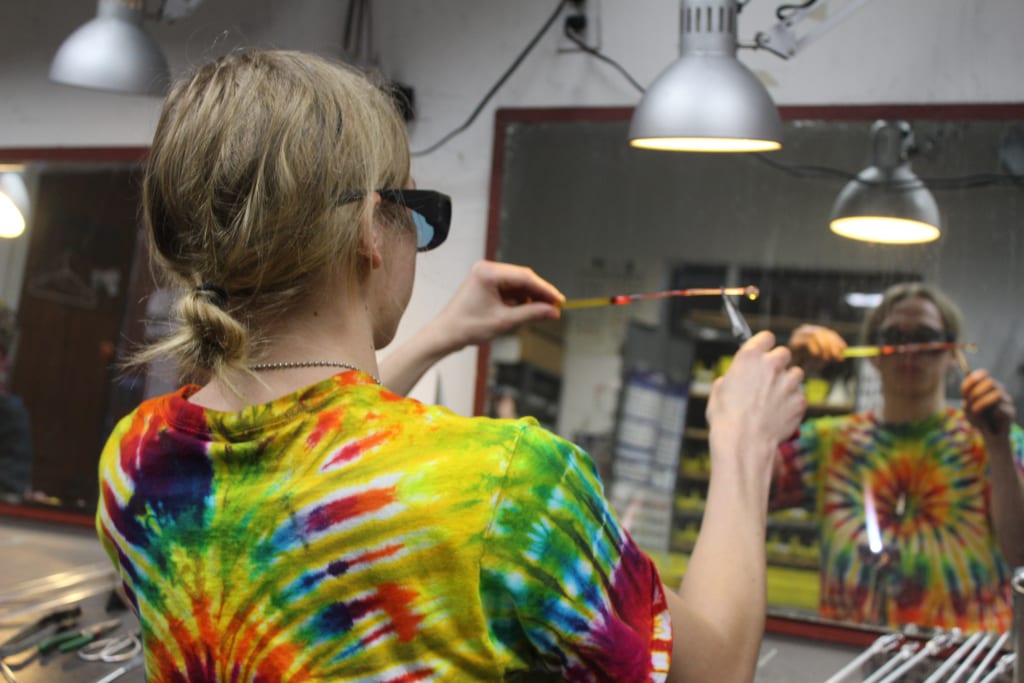
Student pulling colored glass stringers in Youth Glass Flameworking Spring Camp!
A few weeks back, twenty-eight young artists and makers, ages 8-18, visited The Crucible for our Youth Spring Camps in Glass Flameworking, Blacksmithing, and Extreme Gizmos. Almost right away, students were figuring out how to handle glass over an open flame, properly use a soldering iron to connect two wires, and manipulate steel with a hammer, fire and anvil.
While there are many different things youth can do during their Spring and Summer breaks, Ismael Plasencia, our Youth Program Associate for the last decade, points out that, “What we do here is just completely different from what most kids get to experience. Where else do you see 12 year olds with torches?”
Glass Flameworking
In Youth Glass Flameworking, students, ages 12-18, started out by learning how to safely work with glass and the flameworking torch. Flameworking torches get up to 6000 °F, and Heather Katz, one of our Glass Flameworking instructors, explains that a lot of beginning students are skeptical the glass rods won’t burn their fingers when they stick the ends in the flame.
“But glass is a great insulator,” she says. “The rods don’t heat up at all.”
In the weeklong camp, youth made small paperweights and fridge magnets with clear and colored glass, experimented with sculpture by flameworking small snakes, mushrooms, sea turtles, and flowers. Tommy, age 15, says making the paperweights and mushrooms was his favorite part. “They look cool and they are easy to make,” he adds.
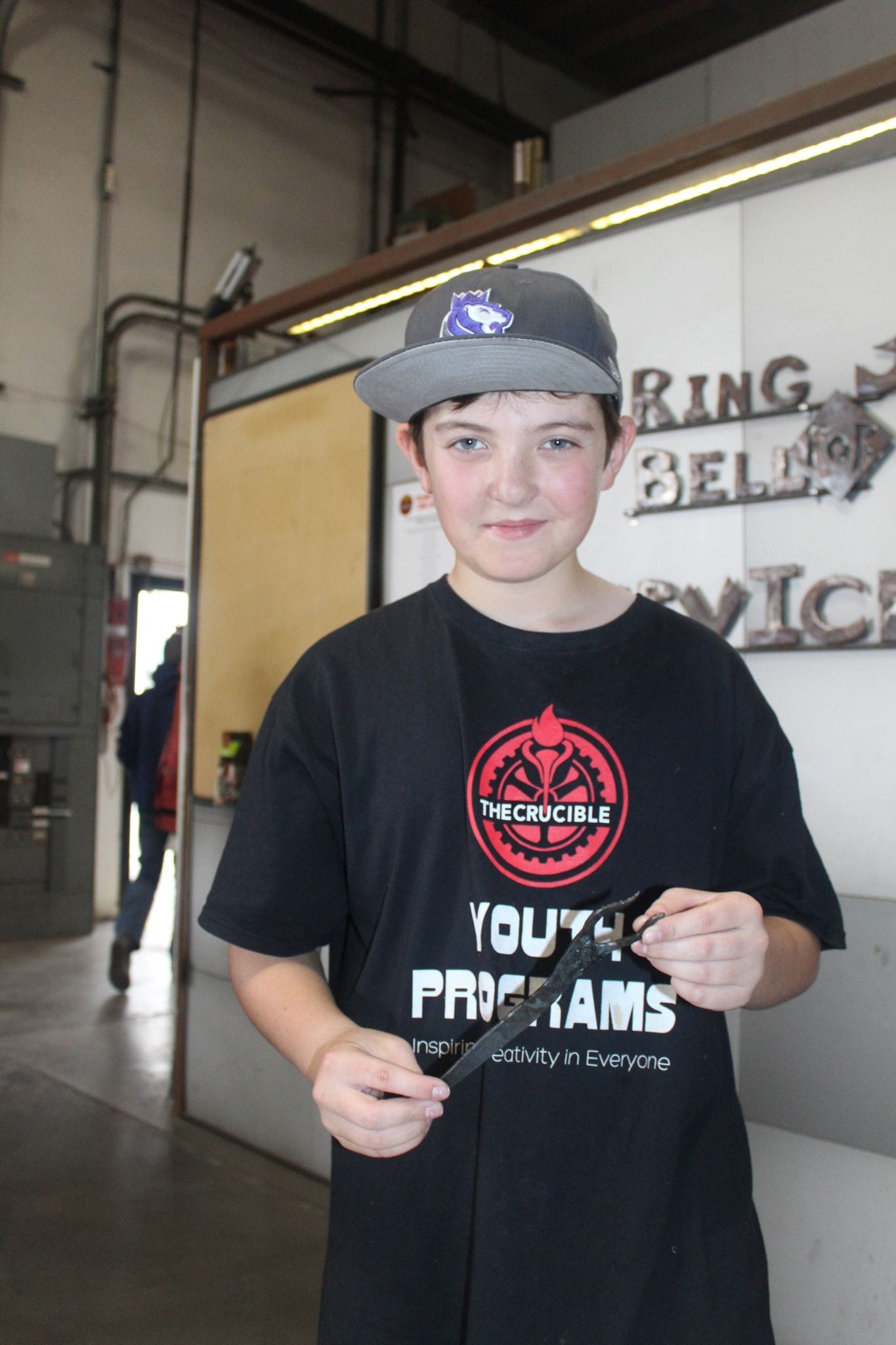
Leo, age 12, holding up his final project! Leo says that the back and forth with the instructors was his favorite part of the Youth Blacksmithing Spring Camp. “The instructors really helped me when I was struggling with something,” he explains.
For their final project, each student came with an idea for their own creature, and Heather helped them figure out each step they would need to take to create what was in their head. Heather explains that teaching youth camps is an inspiring reminder to never hold yourself back. “The kids are so open to trying things that their success rate is actually a bit higher than some adult beginners,” she says. “They don’t come in with any preconceived notions of what they can or can’t do. They just try it. I love that.”
Blacksmithing
In the back of our studio in Blacksmithing, Chris Niemer’s voice boomed over the loud roar of fans and the flaming forge. Department head for the last 17 years, Chris conceptualizes his craft as “treating steel like clay,” using hammers and anvils to manipulate metal until it reaches its desired shape.
Campers started the week making a steel bracelet, learning to twist, bend, and taper steel, stretching out the square stock until it was only 1/16th of an inch thick. Then they perfected their tapering and twisting skills during the hook project, learning how to punch a hole in red hot steel. For their final project, campers split rectangular stock in half with a hot cut to make the tines of the fork.
Helping kids find their way around a blacksmithing shop is only one part of Youth Blacksmithing camps. “At the core, it’s really about problem solving,” Chris explains. “I give them a specific set of ideas I want them to accomplish, and I usually let them make their mistakes. Then I come to them and ask, ‘What’s different about yours in reference to mine? How do we fix it?’”
For Chris, the magic really happens when kids start figuring things out for themselves. “Watching how they take the skills I give them and manipulate them to do what they want to do – that’s the best part,” he says.
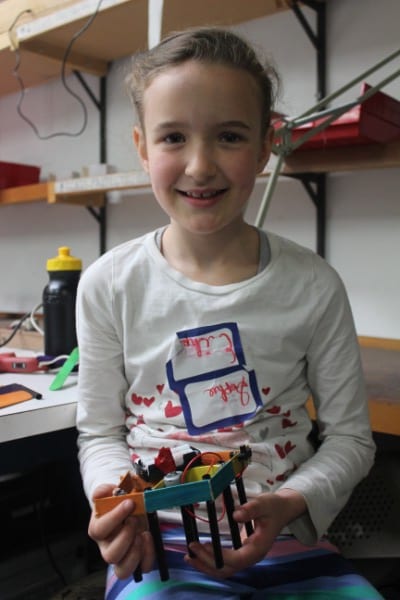
Sophie, age 8, holding up her gizmo in Youth Extreme Gizmos Spring Camp. This gizmo has a motor that makes it dance around the table on its stilt legs!
Extreme Gizmos
Our younger students, ages 8-11, are upstairs in Youth Extreme Gizmos, learning the basic concepts of electricity, how to solder, and how a basic circuit works.
When students filtered in, Julie Bright, one of our Kinetics & Electronics instructors, told them, “Make something – we don’t care what it is, as long as it moves or lights up!” These young artists started off practicing their soldering skills, then their imaginations ran wild as they each worked to create their own individual extreme gizmo.
Sam attached a battery pack to his wooden robot with two stick legs in front and two wheels in back, and marveled as it slowly inched its way around the room. Julian made a motorized popsicle car adorned with two googly eyes, and Misha made a light-up box inspired by one of her favorite characters.
“Kids have a lot less tactile stimulation these days,” explains Julie. “So this class gives them an opportunity to make things in real life and use their understanding of physics to build, create, and make things with their own hands.”
· · · ·
Thanks for joining us for a great Spring Camp! Below are some snapshots from the camp. Hope to see you all at The Crucible’s Youth Summer Camp!
